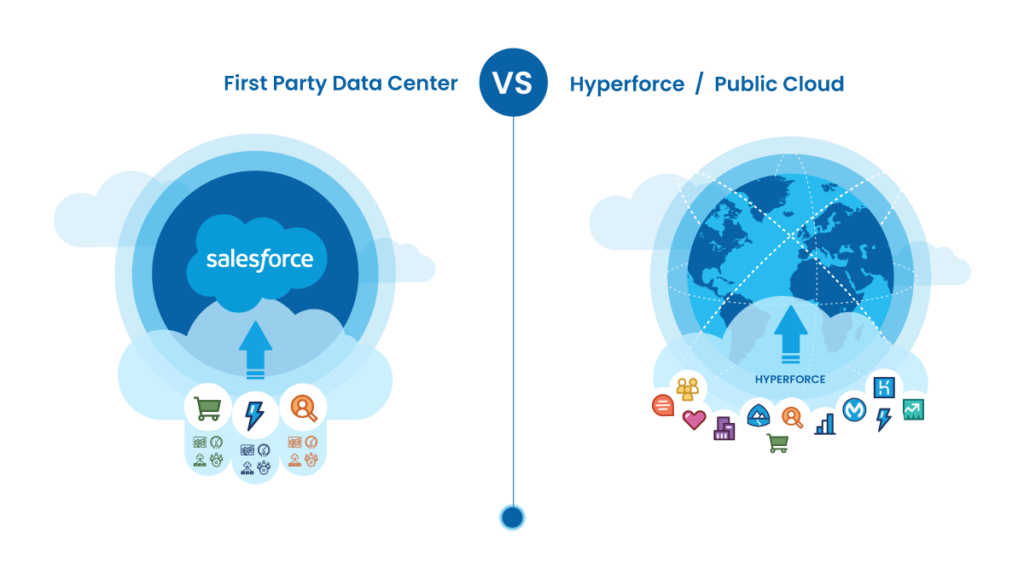Before discussing Hyperforce and its transformative impact on Salesforce, it’s crucial to grasp the fundamental distinction between the previous Salesforce architecture and the current one. Like the evolution of any grand civilization, Salesforce has undergone a remarkable journey of growth and adaptation, continually reshaping its infrastructure to better serve the needs of its vast community of users.
In the bygone era of Salesforce architecture, the system primarily relied on a fixed network of data centers located in specific geographic regions. While this approach provided a sturdy foundation for managing customer relationships and streamlining business processes, it inevitably encountered limitations as businesses expanded globally and demanded greater flexibility and scalability from their cloud solutions. For instance, if the company’s primary data center was located in North America, employees and customers in other regions, such as Europe or Asia-Pacific, might have experienced slower response times or latency issues when accessing Salesforce services. Additionally, compliance with data residency requirements in certain regions could have posed challenges, as data sovereignty laws necessitate that certain data be stored within specific geographic boundaries.

And thus, Hyperforce was born.
Hyperforce was not just an upgrade or enhancement; it was a complete transformation of the Salesforce infrastructure. At its core, Hyperforce was a reimagining of how Salesforce operated. Instead of relying on a fixed set of data centers located in specific regions, Hyperforce broke free from these constraints. It harnessed the boundless energy of the cloud, allowing Salesforce to be deployed anywhere in the world, on any public cloud platform.
In the public cloud, the infrastructure is owned and operated by third-party providers, such as Amazon Web Services (AWS), Microsoft Azure, or Google Cloud Platform (GCP). These providers invest heavily in building and maintaining state-of-the-art data centers and networking infrastructure, ensuring high levels of reliability, scalability, and security.
Hyperforce offered more than just geographical freedom. It also enhanced the security and scalability of the Salesforce platform, ensuring unparalleled performance and reliability in the face of evolving technological challenges and customer demands.
In essence, the transition from the previous Salesforce architecture to the current Hyperforce infrastructure represents a monumental leap forward in the evolution of cloud computing, empowering businesses to unlock new realms of innovation, efficiency, and growth in the digital age.
References:
Introducing Hyperforce – General Information & FAQ

